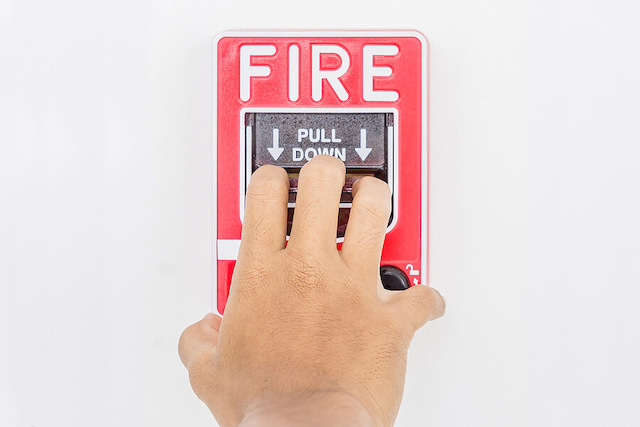During emergencies in the workplace and other establishments, the first decision is whether everyone should stay inside or evacuate. Most companies and property owners tend to focus on crises that involve the former, such as tornado drills and earthquakes. As such, plans for emergencies that warrant an evacuation come up short.
It is important to remember that dangers can equally come from the inside as much as the outside. Fires, chemical spills, and many incidents necessitate an evacuation response. Thus, without a clearly defined and well-practised evacuation protocol, cool heads cannot prevail in such crises, and there is no guarantee that people can get out safely. Now that we have established the necessity of creating and practising evacuation protocols, we shall go over the key components of an effective plan.
Define a clear chain of command
Amidst the confusion of an emergency, most people will generally scramble in a frenzied panic to run and exit the building as fast as possible. This lack of coordination increases the risk of injuries and even property damage. Therefore, there must be a proper chain of command comprised of calm and level-headed leaders responsible for overseeing an orderly evacuation and coordinating other essential tasks. Ideally, these individuals should have undergone tabletop exercises. In short, companies must have at least these basic roles covered:
- Point of contact
The point of contact is the one that contacts emergency services and decides when the evacuation should occur.
- Head counter
Once outside, head counters are responsible for ensuring everyone is accounted for. If each department has its own head counter, these people must report their count to a central authority.
- Coordinator
After the evacuation is declared, coordinators must complete safety tasks, such as double-checking for stragglers, turning off gas lines, and securing the site as best they can.
- First aid
Minor injuries may occur during an evacuation, so first aid respondents must attend to their care until emergency services arrive. Some staff should be trained in performing basic first aid to ensure everyone gets treatment.
Assign meeting areas
Evacuation plans let people know where they should head immediately after exiting the building. Rather than drifting to their vehicles or separating to different sides of the premises, the plan informs everyone when and where they are expected to be once the evacuation begins.
After an evacuation, staying together is critical to allow head counters to correctly tally up everyone who should have left the site. Properly fulfilling their role allows them to pass along their count to emergency personnel about how many are still inside the building and where they may be.
Easy to practise
Evacuation plans developed years ago that have seen little to no practice are essentially useless. In order to embed those plans into people's long-term memory, they must be frequently reminded about them and urged to participate in exercise drills. Written plans are easier to practise since everyone becomes familiar with their roles and how they are expected to act during an emergency. Free-form evacuations only invite chaos as people are left to panic.
Keeps people calm
In most situations, people panic because they do not know what they need to do in an emergency evacuation. When panic sets in, they lose focus and behave dangerously or irrationally. Evacuation plans define proper guidelines on what to do and not to do and provide a checklist for each step. The orderliness of these steps helps calm the nerves and keeps everyone focused on the task at hand -- evacuating to safety.
Frequent route inspection
Hallways and other unused areas tend to become crowded with all sorts of things over time. These obstructions, at some point, may block exit routes necessary for an evacuation plan. Thus, whether it be through individual effort or during drills, people can walk along these escape routes calmly and take note of blockages and other issues, like missing first aid kids or dead light bulbs, as they move along the path.
Conclusion
Clear plans and cool heads often make the difference between life and death in emergencies that require an evacuation response, such as a fire outbreak. Employers, property owners, facility managers and fire safety management teams that take the time to develop a comprehensive evacuation plan help promote a safer environment and, ultimately, save lives.
At TenLearn, we offer SCDF-approved FSM CPD courses in Singapore that equip fire safety managers and other learners with the knowledge to develop proper evacuation planning protocols, along with the various systems found inside fire command centre facilities to control and monitor major emergencies. To learn more about our Fire Command Centre and Evacuation Planning course as well as our other courses on offer, feel free to get in touch with us today.


Write a public review